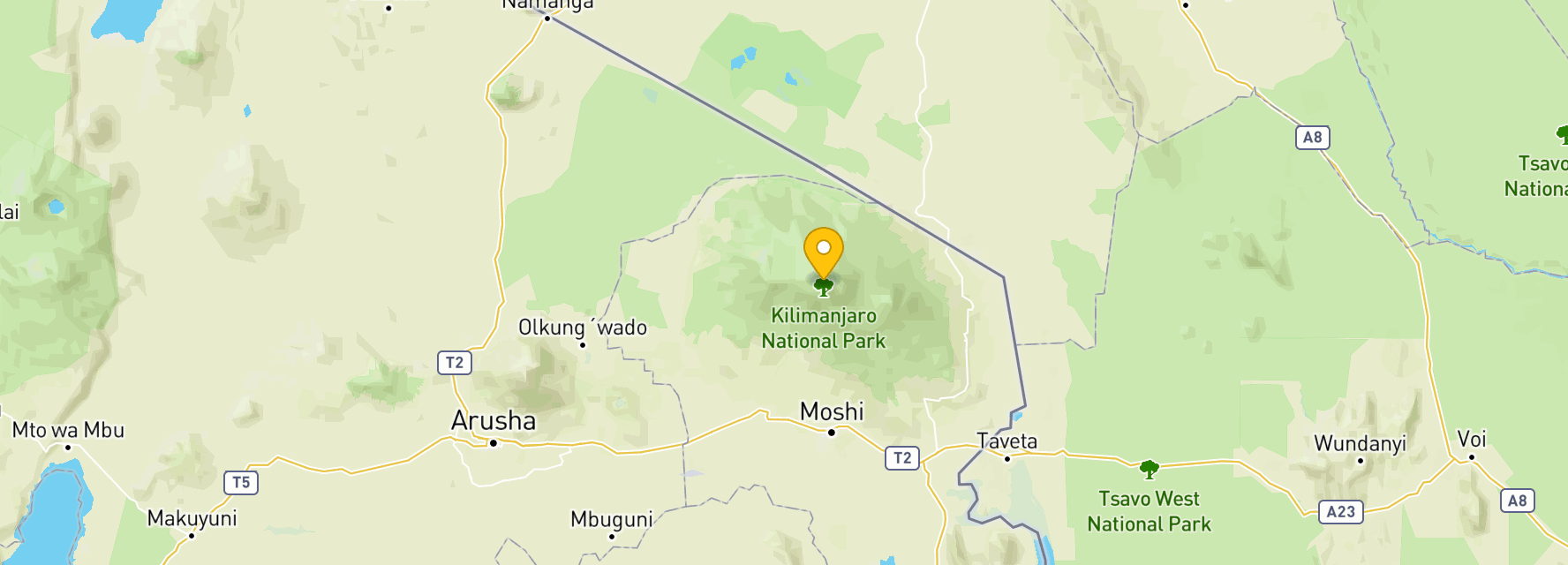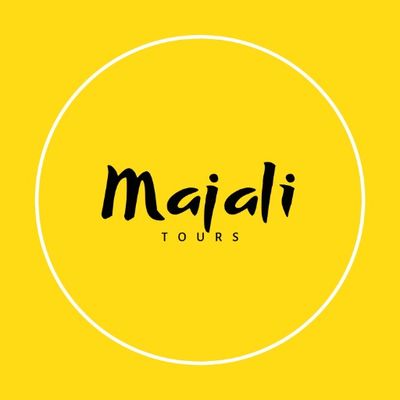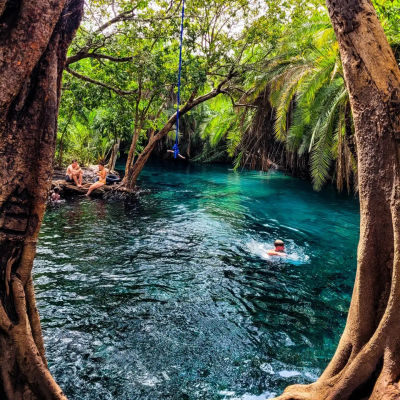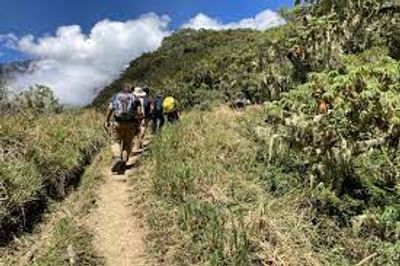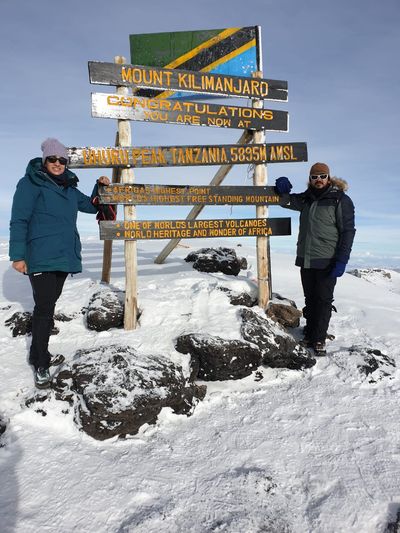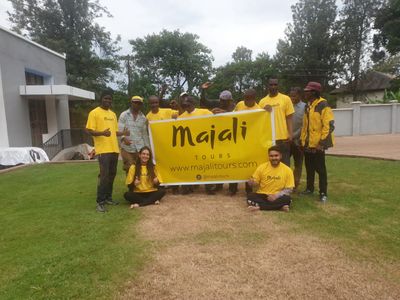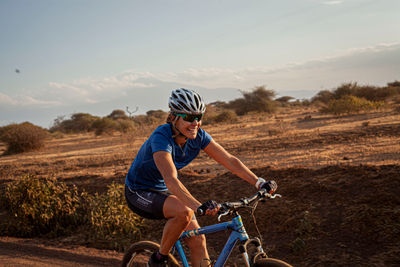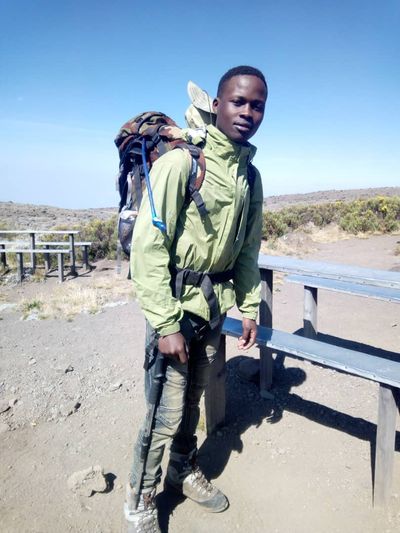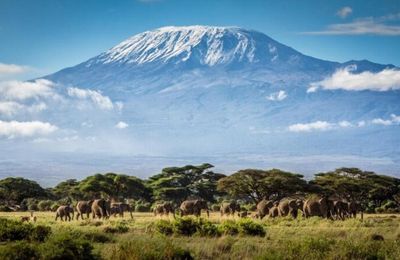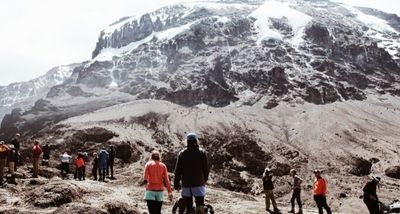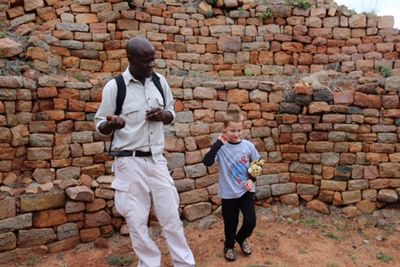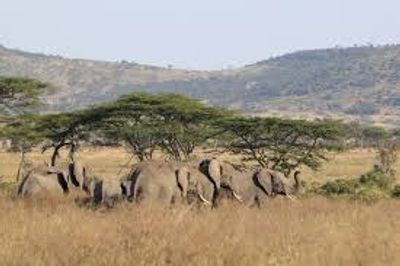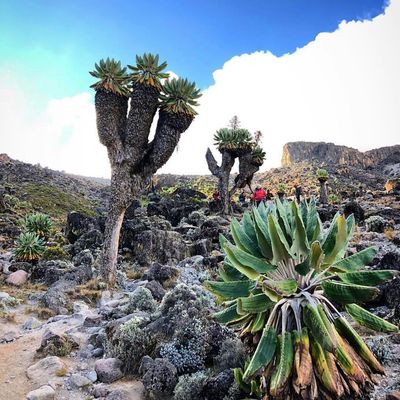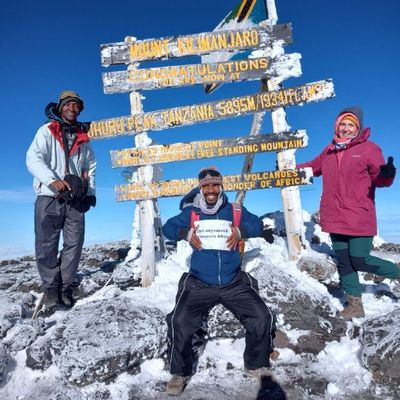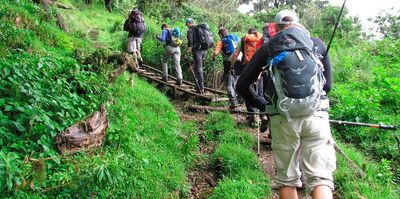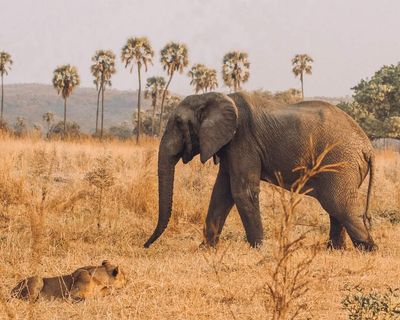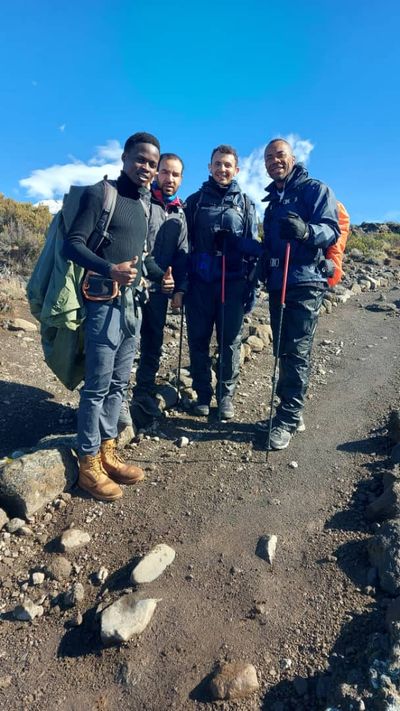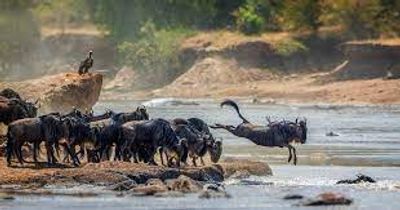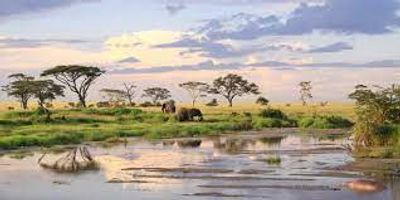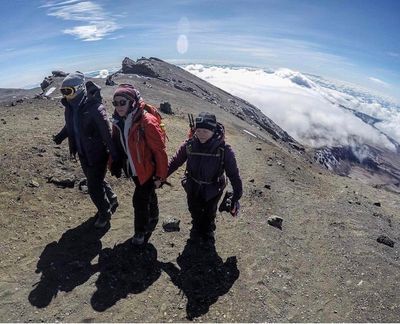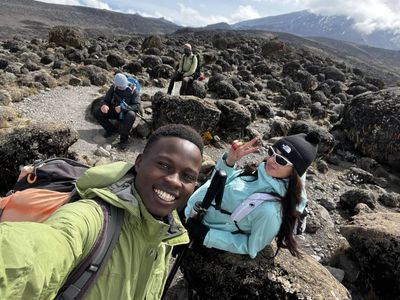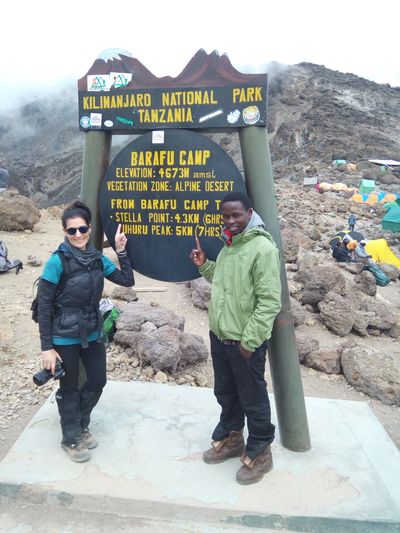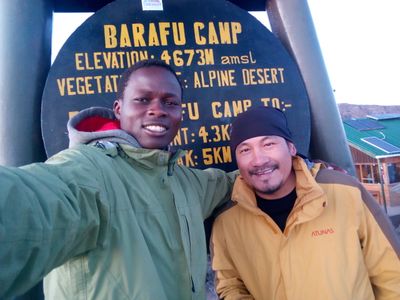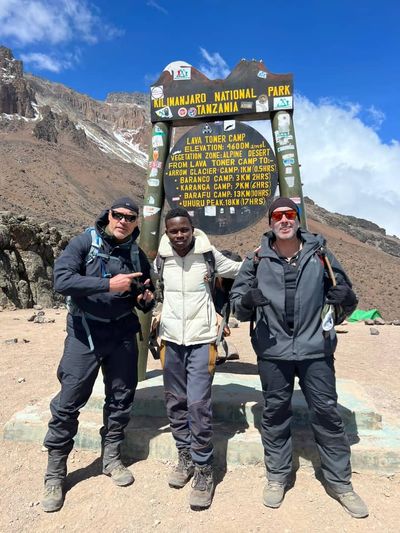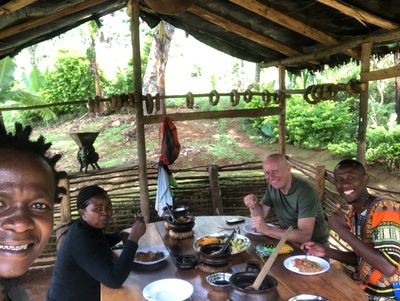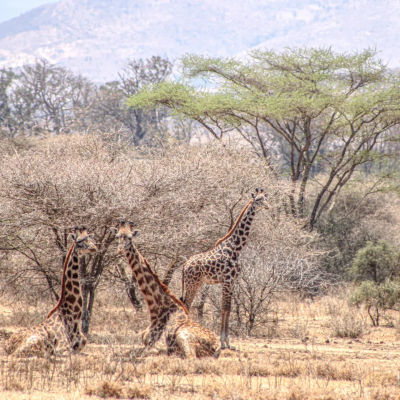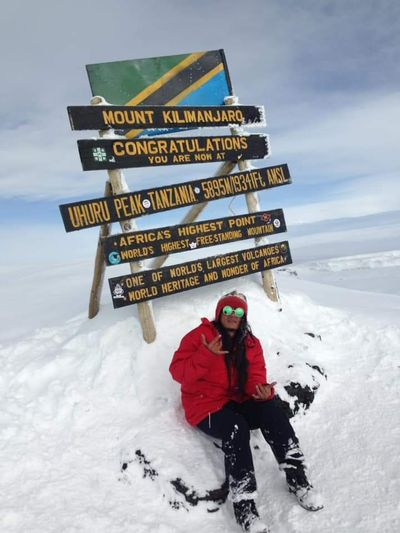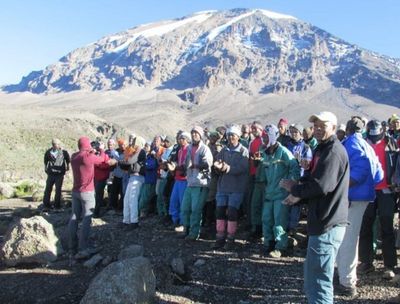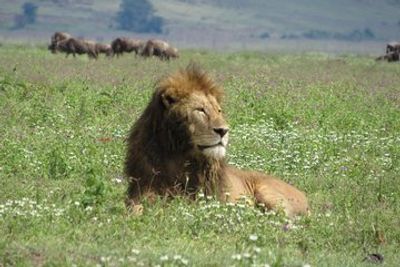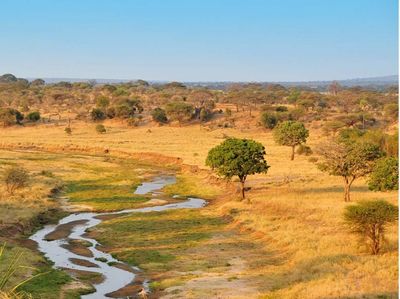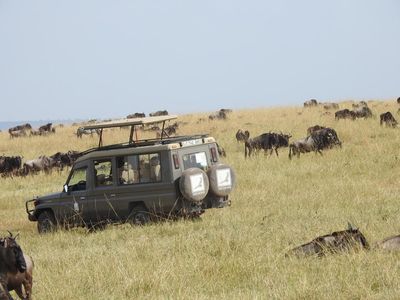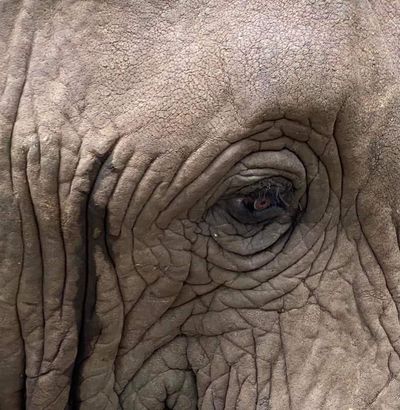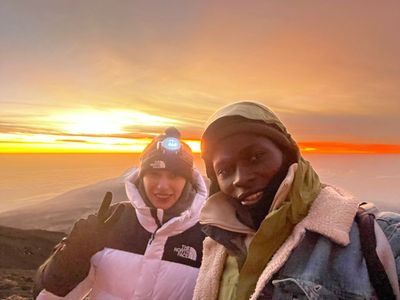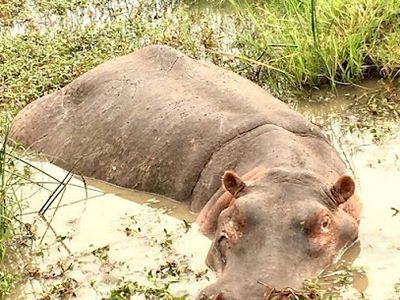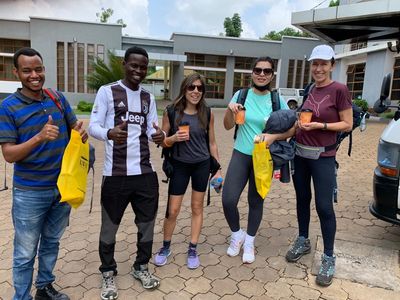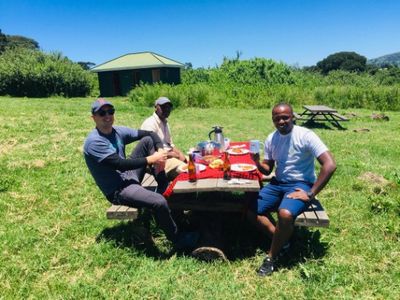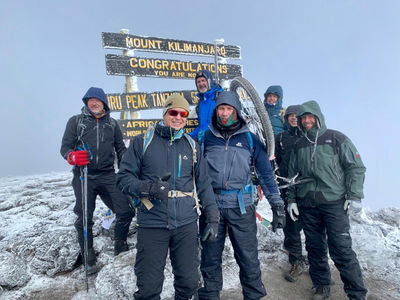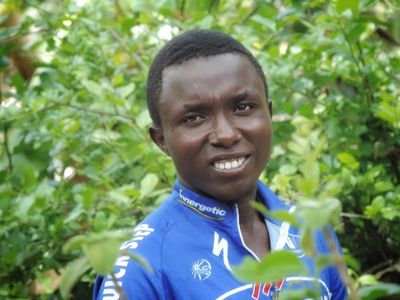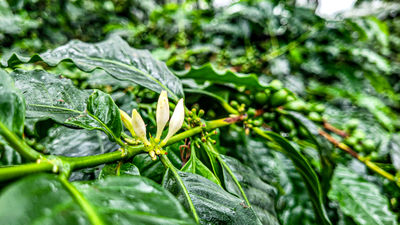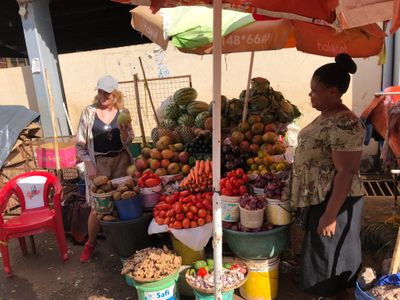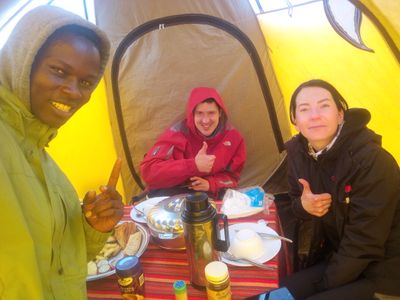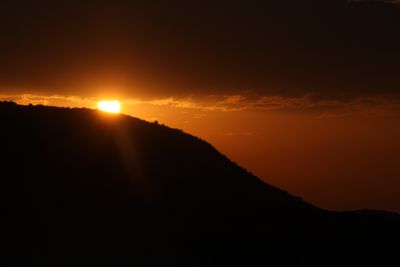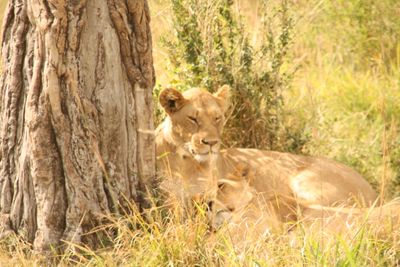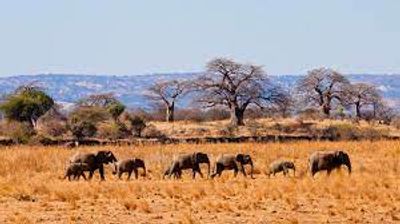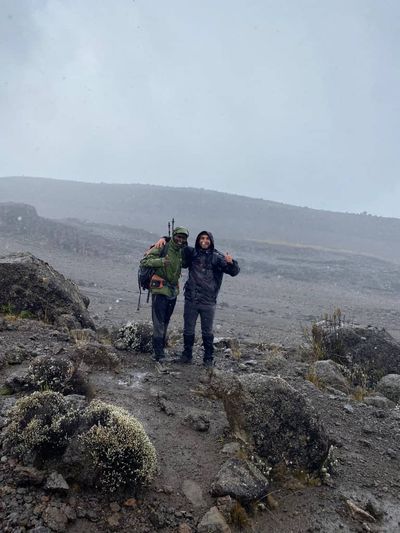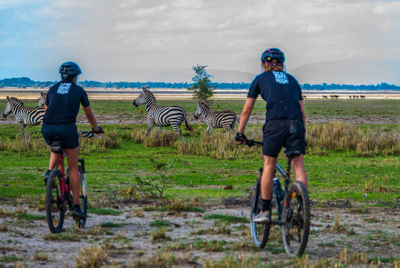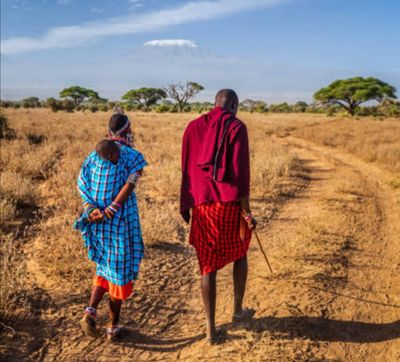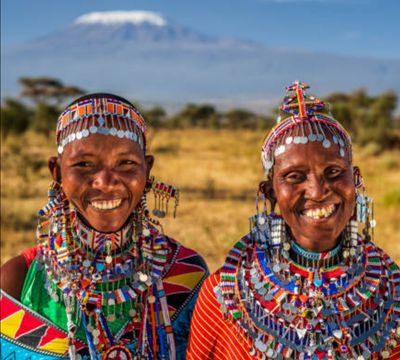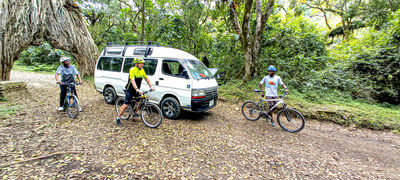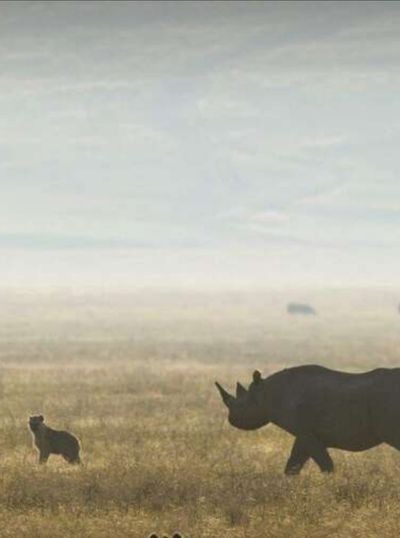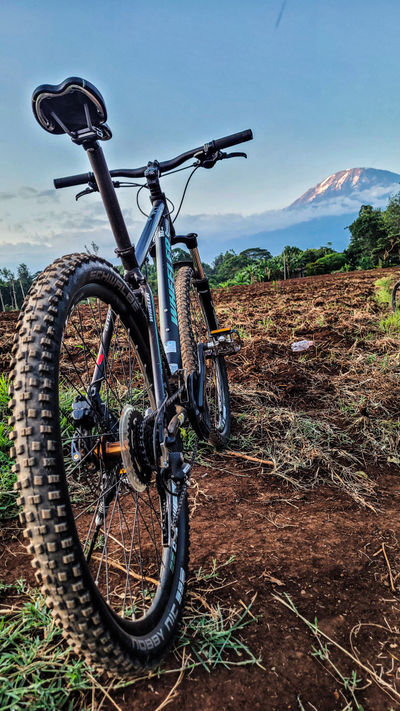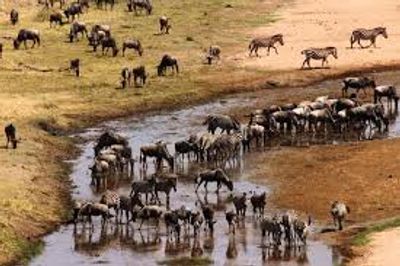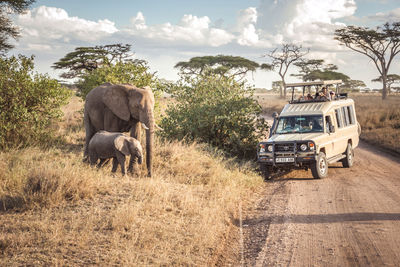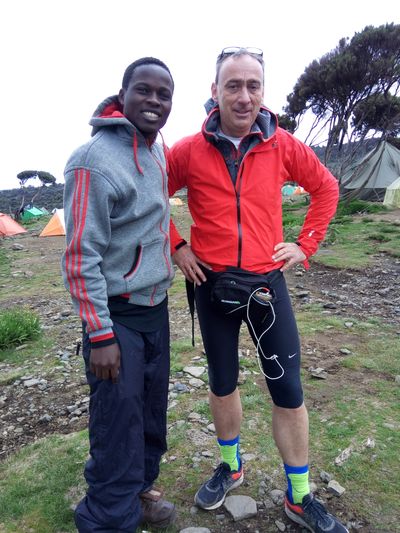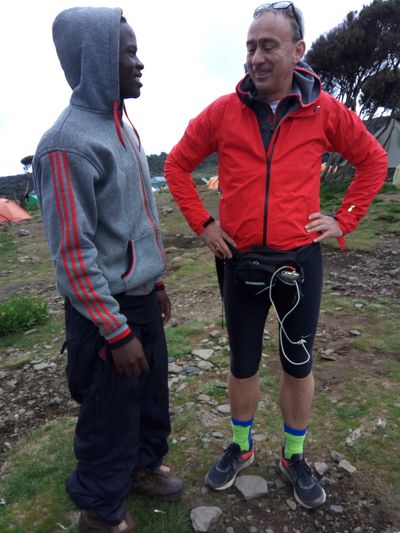



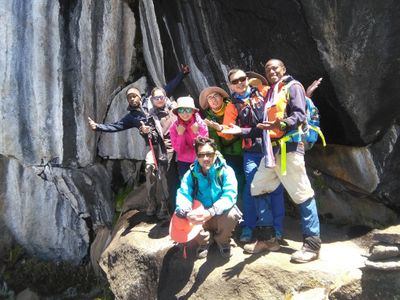
Mount Kilimanjaro Climbing 6 Days Marangu Route
$1,839.00
Mount Kilimanjaro Climbing 6 Days Marangu Route





$1,839.00
per person
What we'll do
Day 1 Moshi - Marangu gate - Mandara Hut After breakfast you will be taken to the Kilimanjaro National Park gate at 1,840 m. Upon completion of the necessary paper work, your trek commences and soon you will be hiking through the dense rainforest of Marangu. Looking up, you might have the opportunity to catch a glimpse of the thumb less black and white colobus monkeys. After you have reached the Mandara Hut (2,700 m) in approximately 4 hours and you have had some time to catch your breath, you will have the option to join a walk to the Maundi Crater where you will enjoy a breathtaking view of the Kenyan interior, as well as of the gleaming lakes which share the border between Kenya and Tanzania. You will stay the evening at Mandara Hut.
Elevation: 1900M to 2700 M Distance: 8 km Hiking time: 4-5 hrs Habitat: Montane Forest Day 2 Mandara Hut– Horombo Hut An early breakfast strengthens you for the trek ahead and shortly after leaving Mandara Hut you will reach the cross roads between Horombo Hut and Maundi Crater. Heading in the direction of Horombu Hut the vegetation will change to shrubs and you will cross the open moon land reaching your destination in approximately 4 – 6 hours. Looking back your path will already be shrouded in clouds and looking forward you will catch glimpses of Mawenzi, Kibo peak and the Maasai steppe. After your evening meal you will drift off to sleep at the Horombu Hut.
Elevation: 2700M to 3,700M Distance: 11 km Hiking time: 6-8 hrs Habitat: Heath and moorland Day 3 Horombo Hut (3,700 m) – Zebra Rocks (3,980 m) – Horombo Hut (4,700 m) Zebra Rocks is on the agenda today, in order for your body to acclimatize to the altitude. Acclimatization plays an important role in improving your chances to reach the summit and this 2 to 4 hour trek offers you the opportunity to stretch your legs and breathe in the fresh air. Zebra Rocks (3,980 m) is named after the distinct black and white stripes covering the rock formation. A hot lunch will await you on your return and the rest of the afternoon is for you to enjoy the spectacular views around you and regain your strength for tomorrow’s hike. You will stay another night at Horombo Hut.
Elevation: 3,700M to 4700M Distance: 4 km Hiking time: 1-2 hrs Habitat: Heath and moorland Day 4 Horombo Hut (3,700 m) – Kibo Hut (4,700 m) After breakfast a long and tough journey to Kibo Hut awaits you. The vegetation slowly changes into alpine desert and you will pass the “last waterpoint” on your way to the so-called “saddle”, a plateau situated between the peaks of Mawenzi and Kibo. You will arrive at the Kibo Hut in about 5 to 6 hours and go to bed straight after dinner as the summit calls for an early start, at approximately 23:00 h.
Elevation: 3700M to 4700M Distance: 9 km Hiking time: 6-8 hrs Habitat: Alpine desert Day 5 Kibo Hut (4,700 m) – Uhuru Peak (5,895 m) – Horombo Hut (3,700 m) The summit day has finally arrived and at around midnight, when the lava ash is still frozen, you will start your ascent. Your path will be strenuous with only your headlight to light the way. You will pass the Hans Meyer Cave at 5,200 m and slowly make your way up. Gilman’s Point at 5,715 m will be reached as the sun rises over the crater rim. You will continue another 1 to 2 hours to Uhuru Peak (5,895 m). The cold is soon forgotten as you stand on the “Roof of Africa”, basking in the rays of the morning light. After well-deserved photo opportunity you will descend along the same path. The lava ash will now have thawed, allowing for a faster descent. Upon your arrival at Kibo Hut, a warm meal and approximate 2 hours rest awaits you, before you continue down to the Horombo Hut,.
Elevation: 4700M to 5895 and down to 3700M Distance: 6 km up/15 km down/9 km to Horombo Hiking time: 6-8 hours up / 15km/9mi down Habitat: Stone scree and ice-capped summit Day 6 Horombo Hut – Marangu Gate– Moshi The surrounding vegetation becomes greener as you continue your descent and soon you will arrive at the Mandara Hut (2,700 m), where a hot lunch awaits you. The journey back to the park gate gives you another chance to observe the beautiful tropical rainforest and spot anything you have missed on the way up, like the Impatiens Kilimanjaro Flower, which is endemic to the rainforest on the slopes of Mt Kilimanjaro. Arriving at the gate you will say goodbye to your mountain crew and be taken back to your Hotel. At the hotel you can enjoy a shower and celebrate your success in reaching the summit of Mt Kilimanjaro.
Elevation: 3700M to 1900M Distance: 19 km Hiking time: 5-8 Hrs Habitat: Moorland to Montane forest
Where we'll go
Meeting point
Kilimanjaro International Airport and at the in Arusha or Moshi
Good to know
Good to know
Is it Safe to travel to Africa? Is it Safe to travel to Tanzania? Africa is currently Safe. Tanzania is very safe and we are ready to organize your African epic holiday.Despite of the fact of how much we are Safe mostly from COVID-19, but still Tanzania has standard operating procedures in place to contain the COVID 19 and ensure your maximum safety. Some airlines have already resumed international flights and we can plan the entire trip for you. Tanzania welcomes you again!
Requirements to get into the country: Visa Visas are compulsory for all visitors, and cost from $50. Visas are obtainable at the airport when you arrive, but rather have one before you land, as officials tend to “not have change”. Visas are obtainable from the Tanzanian Embassy. Please contact us should you want the Embassy address in your area. You will need 2 passport photos and 2 completed forms. Should you not have the time to organize a visa, please contact us and we will gladly assist you for a small fee.
Yellow Fever inoculation certificate The inoculation is obtainable from your nearest travel clinic or from your local physician. Staple it into the front of your passport if you are afraid of losing it. Most African countries require this certificate, so don’t ever be without it when traveling in Africa.
Malaria Tablets Zanzibar is situated in a malaria zone, so it is recommended that you consult your physician on the prescription right for you. Pregnant women are not allowed to take Malaria prevention drugs, and are cautioned before entering any malaria area. To set your mind at rest, we stayed in Zanzibar for 2 years, and fortunately never contracted malaria. This is not to say you won’t get it.. JUST BE CAREFUL.
Insect/ Mosquito repellent Mosquitoes, like little vampires, favor night conditions. Be sure to take a repellent, and cover all exposed areas of your body (e.g. neck and arms). We recommend that you wear trousers at night and long sleeved shirts should you be outdoors. If the heat is too much and you wear a short sleeved shirt, make sure you smear/ spray your arms with repellent. At night before you go to bed, make sure your mosquito net is either touching the ground, or is tucked in, and your exposed areas (especially your ankles) are protected with repellent.
Anti-histamine cream For those irritating bites
Currency Traveler’s cheques and cash are accepted at hotels and Bureau de Changes. US$ are the preferred currency. If you plan on taking cash, make sure you take large bills (e.g. $50 or $100) as these for some unknown reason always get a better rate. Don’t go running to the first Bureau you see at the airport, as these, along with the hotels and resorts, normally have the worst exchange rate. If you are planning on taking a taxi into town, rather pay the fare in US$ and go to a bureau in town. There are many all over town. Try to negotiate a better rate, you never know.
Try to pay for as much as possible in the local currency (Tanzanian Shillings), always bearing in mind the exchange rate. If the locals see you have foreign currency, they will try to relieve you of it. ALWAYS haggle or bargain and try to pretend you know what you are doing. Remember to keep some of your home currency for your return, just in case. You will also have to pay a departure tax of $30 when you leave.
Embassies There are a few consulates on the island, but all embassies are situated in Dar Es Salaam.
Do I need Vaccinations to travel Tanzania and Zanzibar? The vaccination should be acquired a minimum of 10 days before travel to Tanzania and Zanzibar A certificate of vaccination for Yellow Fever will be necessary for arrival from Kenya or other neighboring East African Countries, and if you have traveled recently in any other areas at risk of Yellow Fever, including South America and parts of Asia.
Travel insurance It is imperative that you have travel insurance. Even though they do not check any certificates when you enter the airports, for your own peace of mind, make sure that you are adequately covered.
What to pack Light sandals or rubber flip-flops. Some places require you to remove your shoes before entering. Good walking shoes if you plan on doing a lot of sight seeing. Raincoat or umbrella if you are traveling in the rainy season. Monsoon rains are heavy. Flashlight, for those irritating power cuts. Many hotels do have generator backup systems though. Clothes – these should be light as it is very hot and humid. A jersey or windbreaker is recommended for those winter nights (just in case). Women are “frowned upon” for wearing revealing clothes. Mini-skirts are a definite no. Try to wear shorts (no not hot pants) or a long skirt, and try to keep the shoulders covered. Communications There are many Internet cafes in major towns and at some of the hotels and resorts, so in a non-emergency, this is the best form of communication. Charges range from Tsh1,000 to Tsh5,000 (about $1 to $5) for an hour’s connection. The local telephone company TTCL is inadequate, so if you need to phone internationally, best you ask at the Internet café. They usually have facilities, or they will be able to direct you to someone who has. Be careful, it may be expensive.
Electricity This is the same as the UK and in South Africa, being 220/230 V. Do not leave appliances plugged in all day, as there are many power fluctuations which might destroy them. US Citizens will have to get an adapter and a transformer for Zanzibar power. If your plug does not match, then enquire at a local shop, they should be able to assist.
Driving If you are planning on renting a car or motorbike, make sure you have a VALID international driver’s license. You will be stopped in one of the many roadblocks, and often police are just looking for a bribe. Bribery has become a culture amongst the police, so make sure you have the correct documentation, to avoid having to pay a bribe.
If you plan on driving in Stone Town, make sure you know the roads, as there are many one way streets and the drivers are reckless. If a police car approaches with a siren hailing, you have to pull over to the side of the road and stop, no matter which way it is going. Once it has passed, you may pull out and continue.
Crime As with all cities, Zanzibar is not free of crime. Unfortunately it has been on the increase, so make sure you do not take valuables on holiday with you. If you do take expensive jewelry, make sure it is either locked up when you go out, or hidden from sight.
Be careful not to walk the streets at night alone, this invites trouble. If you are confronted, do not resist, and try to report the matter to the police as soon as possible. The police are sometimes rude and arrogant, but an attempt will be made to recover your property.
The shorter rainy period of October to December often has thunderstorms that pass over the mountain, dropping rains as they go. Typical the cloud disappear in the evening leaving the nights and morning very clear with excellent visibility.
January and February are usually dry, warm and clear with brief rain showers which make good climbing condition
Even thought one can climb thought out the year, January, February and September are the best month with July, August, November and December are also good.
What is included?
- Accommodation
- Entry fee
- Transfer
- food at the field
- Guides and porters
What is not included?
- Tip
- visa
- Air ticket
What to bring
- Hiking boots
- sun hat
- sun glasses
- Rain jacket
Cancellation and refund
The booking fee ($45.00 p.p. included in the displayed price) is non-refundable if you cancel your booking. If a local cancels a booking or does not show up at the agreed time and place, you receive a full refund of the booking fee.
You are buying a unique experience that also empowers local communities and people to improve their lives by sharing their knowledge and lifestyle.
We give space for creativity. The locals themselves decide and develop the activity idea and design it in a way they find interesting.
Locals get 100% of the price they want. The booking fee is added separately.
Meet the Local

His name is Peter Kinyaiya, the local Tour Guide & Operator in Tanzania, born and raised on the slope of our Majestic Mount Kilimanjaro at 1400m. He was a porter on Mt Kilimanjaro for more than 6 years before keeping some money and going back to college and training to be a qualified tour guide. After working with other companies for 10 years, he decided to get into the field and run safaris and trekking tours himself. In 2014, Twende Africa Tours The company was founded by his comrade porters all from the brotherhood. Their dream was to provide ordinary people with the life-changing opportunity to climb the majestic Mount Kilimanjaro. By booking with them you support the life of local communities directly; they will take you there not send you there! We offer advanced Yoga Retreat Kilimanjaro Climbing, Wildlife Safari, Day Trips, and Beach Holiday. It is our pleasure to welcome you to our country Tanzania, the country of Mt Kilimanjaro, the African highest point and the world’s highest free-standing mountain, Serengeti NP, Ngorongoro Crater, Zanzibar Island.
Ask questions
Please note
It can take 1-2 days until locals respond to your questions.
Asking questions is restricted to registered users. Don't worry. It's free!
